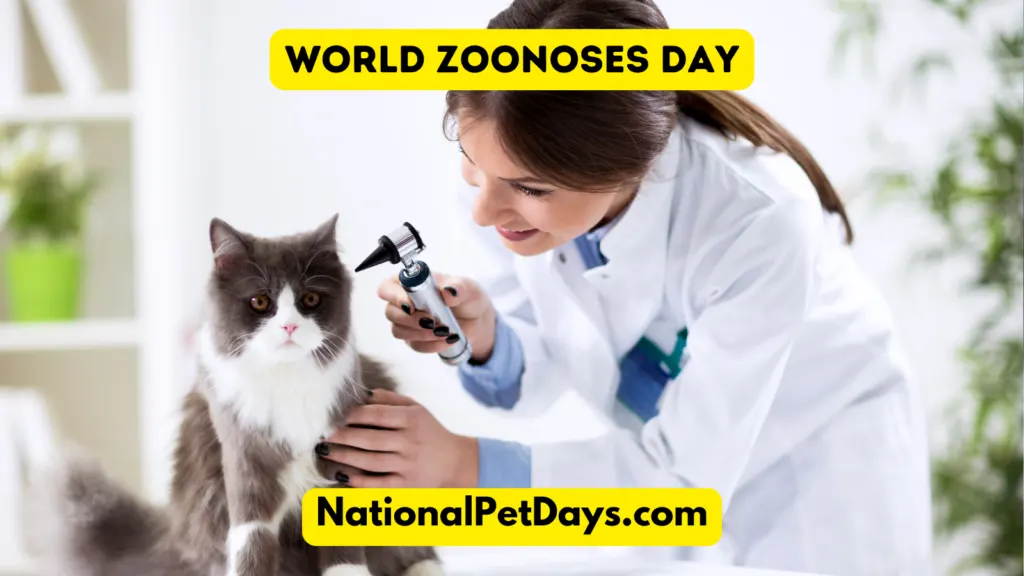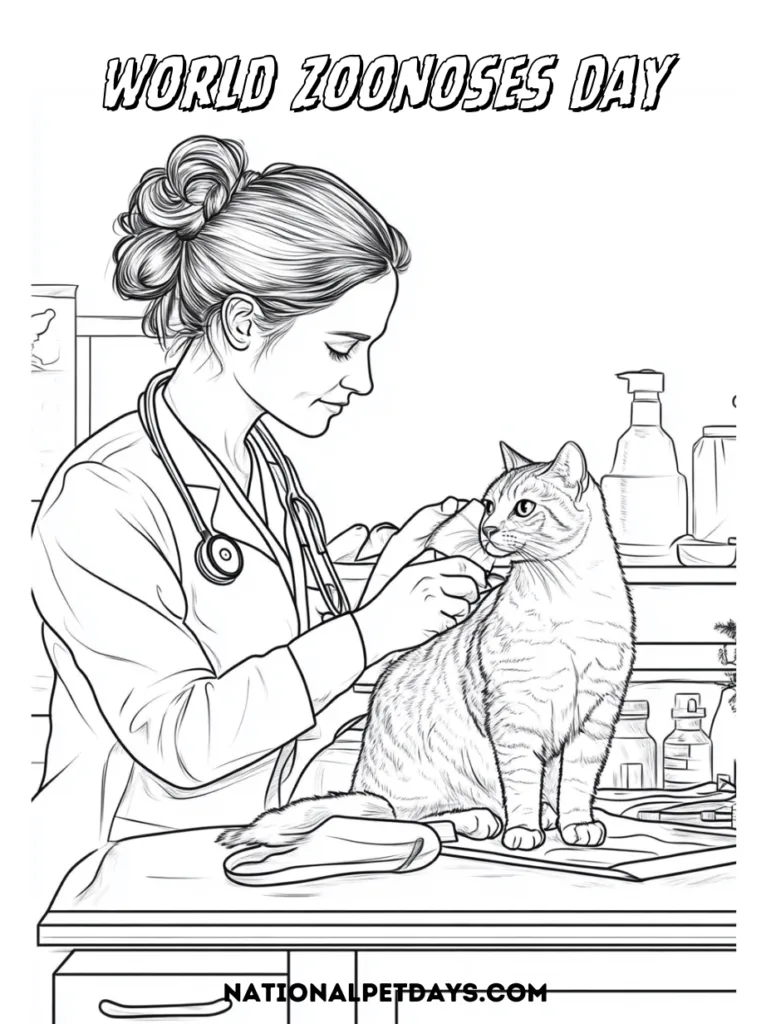Every year on July 6th, the world observes World Zoonoses Day, a day dedicated to raising awareness about zoonotic diseases—those illnesses that can be transmitted from animals to humans. This day not only commemorates the work of Louis Pasteur, who successfully administered the first vaccine against rabies, a zoonotic disease, on this date in 1885, but it also serves as a crucial reminder of the ongoing need for vigilance in the face of diseases that can cross the species barrier.
For pet lovers, World Zoonoses Day carries special significance. Pets are often considered members of the family, and understanding zoonotic diseases is vital for keeping both pets and humans safe. The close bond between humans and their pets can sometimes lead to the unintentional transmission of diseases, making education and awareness critical.

Understanding Zoonotic Diseases
Zoonotic diseases, or zoonoses, are infections that are naturally transmitted between animals and humans. These diseases can be caused by bacteria, viruses, parasites, and fungi, and they affect millions of people each year.
Some well-known zoonotic diseases include rabies, Lyme disease, salmonella, and ringworm. While some zoonotic diseases are relatively mild, others can be severe or even fatal.
Pets, including dogs, cats, birds, and reptiles, can all carry zoonotic diseases. For example, dogs and cats can carry rabies or toxoplasmosis, while reptiles like turtles and snakes can transmit salmonella. Understanding these risks and taking appropriate precautions can help prevent the spread of zoonotic diseases.
Why World Zoonoses Day Matters for Pet Lovers
For pet lovers, World Zoonoses Day is an important reminder to prioritize the health and well-being of both pets and humans. Here are a few reasons why this day matters:
- Prevention Through Awareness: Understanding the potential risks of zoonotic diseases is the first step in preventing them. Pet owners should be aware of the common zoonotic diseases that their pets could carry and know how to mitigate these risks. Regular veterinary check-ups, proper hygiene, and vaccinations are essential components of preventing the spread of zoonotic diseases.
- Vaccination: Vaccinating pets is one of the most effective ways to prevent zoonotic diseases. Rabies, for instance, is a deadly virus that can be transmitted from animals to humans, but it is entirely preventable through vaccination. Ensuring that pets are up-to-date on their vaccinations is crucial for their safety and the safety of the people around them.
- Hygiene and Sanitation: Practicing good hygiene is another critical aspect of preventing zoonotic diseases. Washing hands after handling pets, cleaning litter boxes, and properly disposing of pet waste are all important practices that can reduce the risk of transmission. Pet owners should also be cautious when handling pet food, especially raw diets, as they can harbor harmful bacteria like salmonella.
- Educating Others: World Zoonoses Day is an opportunity for pet lovers to spread awareness among their communities. Educating friends, family, and fellow pet owners about the risks of zoonotic diseases and the importance of preventive measures can help create a safer environment for everyone.
- Veterinary Care: Regular visits to the veterinarian are essential for maintaining pet health and preventing zoonotic diseases. Vets can provide valuable advice on vaccinations, flea and tick prevention, and other measures to protect against zoonoses.
World Zoonoses Day is more than just a date on the calendar; it’s a call to action for pet lovers everywhere. By understanding the risks of zoonotic diseases and taking steps to prevent them, pet owners can ensure the safety and health of both their beloved animals and themselves. As we celebrate the bond we share with our pets, let’s also commit to protecting that bond by staying informed and proactive in the fight against zoonotic diseases.
Download & Color – or Pin & Share

